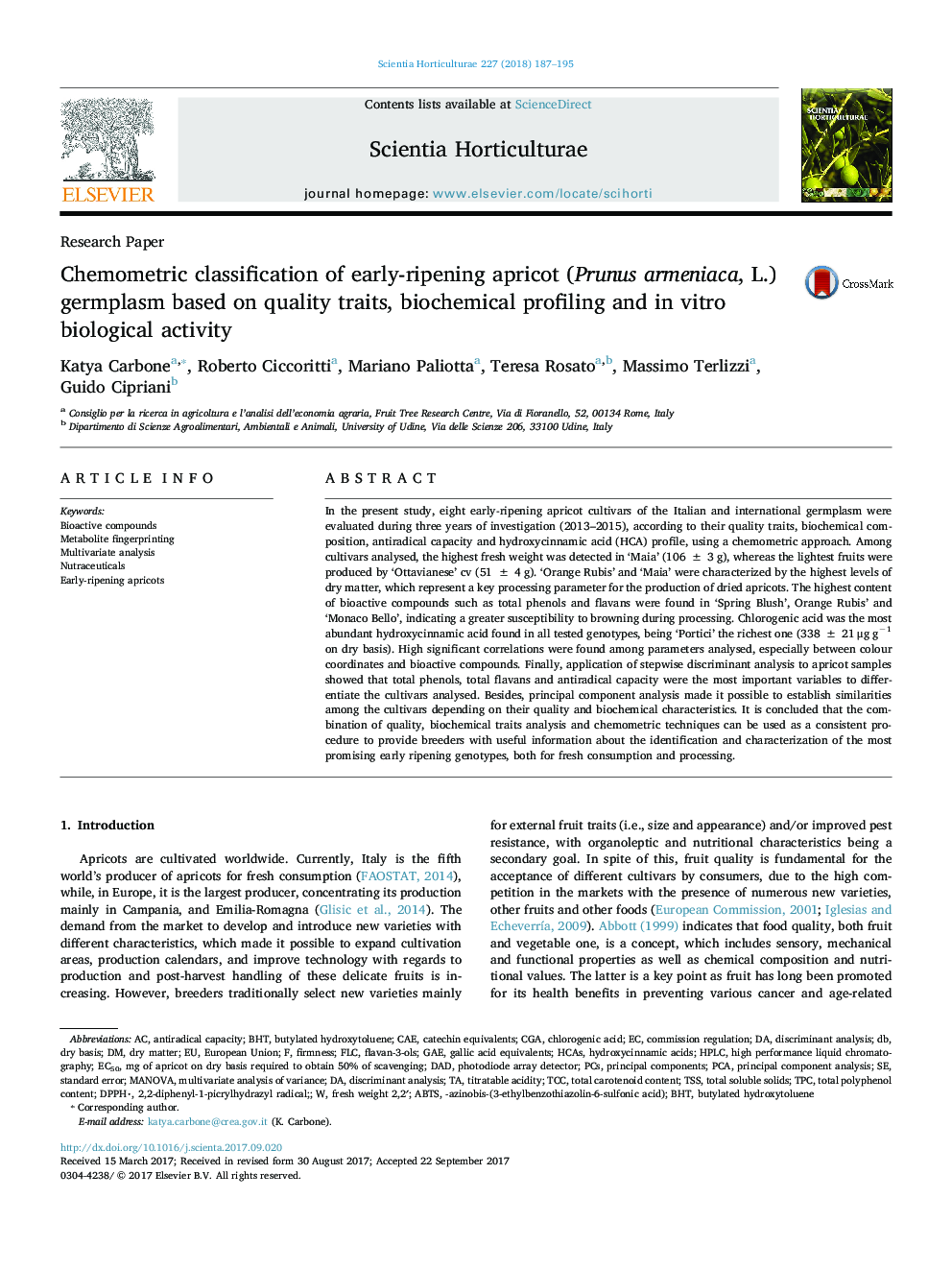| Article ID | Journal | Published Year | Pages | File Type |
|---|---|---|---|---|
| 5769470 | Scientia Horticulturae | 2018 | 9 Pages |
Abstract
In the present study, eight early-ripening apricot cultivars of the Italian and international germplasm were evaluated during three years of investigation (2013-2015), according to their quality traits, biochemical composition, antiradical capacity and hydroxycinnamic acid (HCA) profile, using a chemometric approach. Among cultivars analysed, the highest fresh weight was detected in 'Maia' (106 ± 3 g), whereas the lightest fruits were produced by 'Ottavianese' cv (51 ± 4 g). 'Orange Rubis' and 'Maia' were characterized by the highest levels of dry matter, which represent a key processing parameter for the production of dried apricots. The highest content of bioactive compounds such as total phenols and flavans were found in 'Spring Blush', Orange Rubis' and 'Monaco Bello', indicating a greater susceptibility to browning during processing. Chlorogenic acid was the most abundant hydroxycinnamic acid found in all tested genotypes, being 'Portici' the richest one (338 ± 21 μg gâ1 on dry basis). High significant correlations were found among parameters analysed, especially between colour coordinates and bioactive compounds. Finally, application of stepwise discriminant analysis to apricot samples showed that total phenols, total flavans and antiradical capacity were the most important variables to differentiate the cultivars analysed. Besides, principal component analysis made it possible to establish similarities among the cultivars depending on their quality and biochemical characteristics. It is concluded that the combination of quality, biochemical traits analysis and chemometric techniques can be used as a consistent procedure to provide breeders with useful information about the identification and characterization of the most promising early ripening genotypes, both for fresh consumption and processing.
Keywords
DPPHCAETPCTCCFlavan-3-olsCGAABTSBHTTSSGAEFLCEC50HCAsDAD2,2-diphenyl-1-picrylhydrazyl radicalPCAPhotodiode array detectorEuropean UnionMetabolite fingerprintingPrincipal componentsFirmnessChlorogenic acidgallic acid equivalentsHydroxycinnamic acidstitratable acidityMANOVADiscriminant analysismultivariate analysis of variancePrincipal component analysisMultivariate analysisBioactive compoundsdry basisstandard errorPCsAntiradical capacitydry mattercatechin equivalentsTotal polyphenol contenttotal carotenoid contentNutraceuticalsbutylated hydroxytoluenehigh performance liquid chromatographyHPLCtotal soluble solids
Related Topics
Life Sciences
Agricultural and Biological Sciences
Horticulture
Authors
Katya Carbone, Roberto Ciccoritti, Mariano Paliotta, Teresa Rosato, Massimo Terlizzi, Guido Cipriani,
